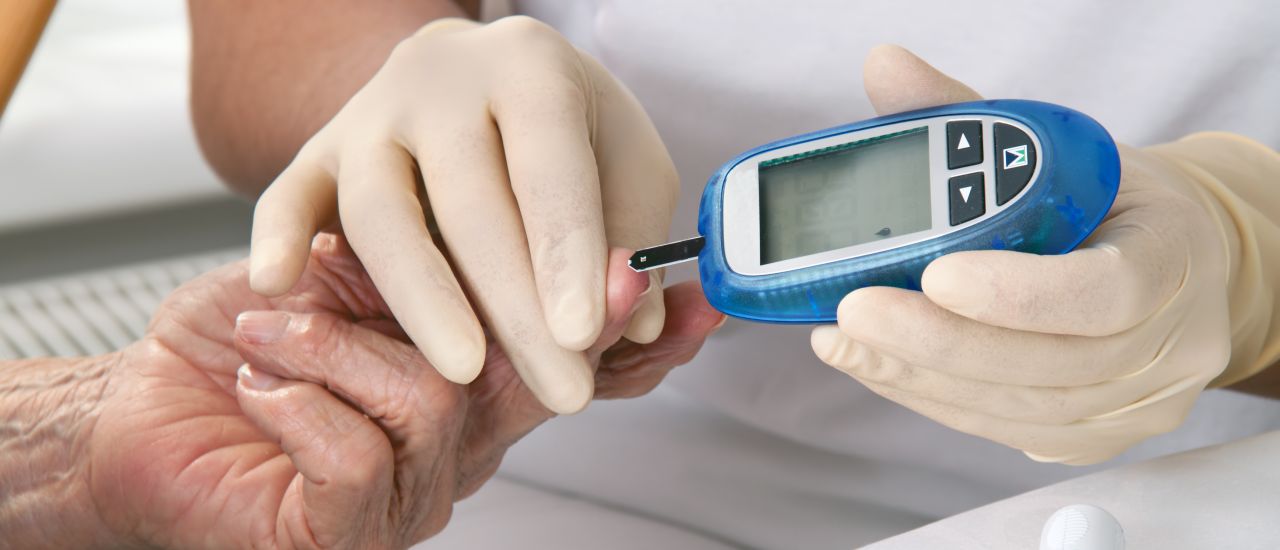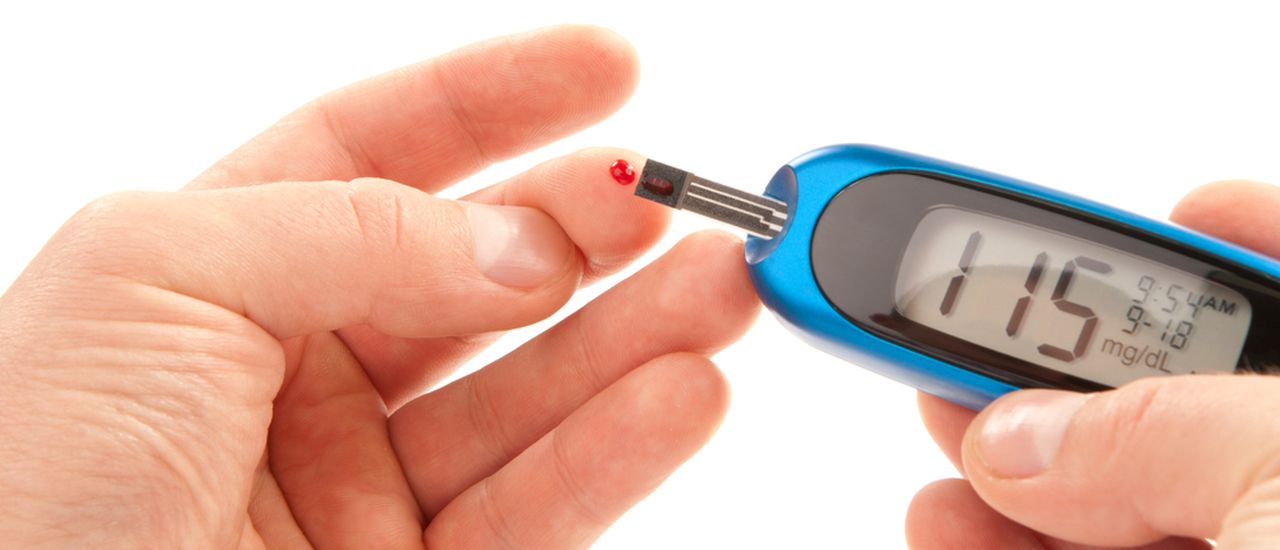This delicious dessert is low in fat, salt and sugar! Continue reading “Baked cheese cake for diabetics”
Tag: Diabetes
Could you be suffering from Type 2 Diabetes?
Type 2 diabetes is much more common than type 1 diabetes, and while adults have a higher risk of developing it, a lot more children are being diagnosed – due to the increase in childhood obesity.
Continue reading “Could you be suffering from Type 2 Diabetes?”
Could you be suffering from Diabetes?
Insatiable thirst? Frequent trips to the toilet? Both of these are warning signs of diabetes, which is caused by high blood sugar. Symptoms can develop very quickly, over a few days or weeks, so if you’re experiencing any of the following symptoms, it’s time to see your doctor for a check-up. Continue reading “Could you be suffering from Diabetes?”
Metabolic syndrome? What’s that?!
It’s a health condition that everyone’s talking about, but very few people actually know what it is. And although metabolic syndrome was only identified less than 20 years ago, it has become as widespread as pimples and the common cold.
Metabolic syndrome isn’t a disease in itself – it’s actually a cluster of risk factors which include insulin resistance, high blood pressure, high blood sugar, unhealthy cholesterol levels and abdominal fat. Obviously, having any one of these risk factors isn’t good, but when combined, they set the stage for some serious health problems. Together, these risk factors double your risk of blood vessel and heart disease, and increase your risk of diabetes by more than 5 times.
Could you have diabetes?
Unquenchable thirst, frequent trips to the toilet, increased appetite and significant weight loss are often early warning signs of diabetes.
Diabetes is a problem of high blood sugar – either the body produces too little insulin, or the tissues don’t respond to insulin in the way they are supposed to. The end result is excess sugar in the blood, while body cells are starved of their fuel and ‘go hungry’. If you’ve been experiencing these symptoms it’s very important that you make an appointment with your doctor to get tested.
Lifestyle diseases are on the rise – are you at risk?
Lifestyle diseases are directly associated with the way a person lives, and the type of lifestyle they lead. These diseases include arteriosclerosis, heart disease, stroke, obesity, diabetes, certain cancers including colon, bowel and lung cancer, and diseases associated with smoking, alcohol and drug abuse.
Continue reading “Lifestyle diseases are on the rise – are you at risk?”
Can my pregnancy give me Diabetes?!
Gestational diabetes is diabetes that develops during pregnancy. It’s a fairly common complication of pregnancy and affects approximately 4% of all pregnant women. Here’s what you need to know about it.
Who gets gestational diabetes?
You may be at greater risk of developing gestational diabetes if you:
- Have high blood pressure or other medical conditions
- Have given birth to a large baby before
- Are obese when you become pregnant
- Are older than 30 years of age
- Have given birth to a baby who was stillborn or suffering from certain birth defects
- Have had gestational diabetes in previous pregnancies
- Have a family history of diabetes
- Have pre-pregnancy type 1 or type 2 diabetes
Every pregnant woman with one or more risk factors should be offered a screening test for gestational diabetes, but it’s important to know that many women who develop gestational diabetes have no risk factors. If any of these risk factors pertain to you, be sure to let your doctor know.
What causes gestational diabetes?
Gestational diabetes results from the changes that occur in all women during pregnancy – increased levels of certain hormones can interfere with your body’s ability to manage blood sugar, causing a condition called “insulin resistance.”
Will gestational diabetes harm my baby?
If left untreated, gestational diabetes can cause certain complications for your new-born, such as macrosomia. This is when the baby grows too large, which increases the risk of problems during childbirth. Your new-born baby may have a higher risk of developing jaundice and breathing problems. They may also experience a sudden drop in blood sugar after birth, requiring treatment with a sugar solution given intravenously.
Timing is an important factor
The risk of birth defects in infants whose mothers have gestational diabetes is very low because most women develop gestational diabetes after the 20th week of pregnancy, when the foetus is already fully developed. The risk of birth defects only increases if you have high, out-of-control blood sugar levels during the first six to eight weeks of pregnancy, or you had undiagnosed diabetes before pregnancy.
If you have gestational diabetes, your child is more likely to develop type 2 diabetes later in life as well as be overweight throughout life.
Does gestational diabetes go away?
It is usual for a woman’s blood sugar levels to return to normal after delivery. However, once you’ve had gestational diabetes, you are more likely to develop gestational diabetes again during subsequent pregnancies. Women with gestational diabetes have a 50% chance of developing diabetes within 10 to 20 years of delivery. So, it’s important to stick to a healthy eating plan, get back to regular exercise after your pregnancy, and don’t forget that annual check-up!
Joanne Hart for HelloDoctor.com
Sources:
http://www.nhs.uk/Conditions/gestational-diabetes/Pages/Treatment.aspx
http://diabetes.webmd.com/guide/gestational_diabetes
A delicious salmon recipe for Diabetics
When it comes to nutrition, diet is very important for a diabetic, and you should eat a well-balanced diet that’s rich in high-fibre carbohydrates, vitamins and minerals, as well as fatty fish, such as salmon and mackerel.
This recipe is a perfect example of a healthy, well-balanced meal that’s ideal for diabetics.
Ingredients:
• 4 skinless salmon fillets (around 150 grams each)
• 2 cups picked watercress sprigs or baby rocket
• 1 x 250g punnet cherry tomatoes – halved
• 1 bunch of asparagus, cut diagonally into 4cm lengths
• 1 Lebanese cucumber, peeled, halved and sliced diagonally
• Olive oil spray
Tarragon Caper Dressing
• 125g (1/2 cup) low-fat natural yoghurt
• 2 tsp baby salted capers – rinse, finely chopped
• 1 tbs fresh tarragon – finely chopped
• 1 tbs fresh chives – finely chopped
Directions
1. Cook the asparagus in a medium saucepan of boiling water for 2 minutes or until bright green and tender crisp.
2. Refresh asparagus under cold running water and drain well.
3. To make the dressing: combine the yoghurt, capers, tarragon and chives in a small bowl. Taste and season.
5. Heat a large frying pan over a high heat.
6. Spray the salmon lightly with olive oil spray.
7. Add the salmon to the pan and cook for 2 minutes each side for medium or until cooked to your liking.
8. Place the asparagus, watercress, tomato and cucumber in a large bowl and toss to combine.
9. Divide the salad among serving plates.
10. Top with salmon and drizzle with dressing to serve.
Smoked chicken, broccoli and blue cheese salad
Root vegetables and broccoli are especially good for diabetes. The blue cheese in this recipe gives it added flavour to tantalise your taste buds.
Continue reading “Smoked chicken, broccoli and blue cheese salad”
Blueberry pancakes
For type II diabetes, 50% – 60% of the diet should be foods that are high in complex carbohydrates, such as in this recipe, as they release their glucose content slowly. Blueberries also have a low GI rating.
Beetroot, walnut & watercress salad
Beets have a low GI, making them a good choice for diabetes. To save time, microwave the beetroot, rather than roast them, unless you roast them the day before along with something else. The watercress can be replaced by baby spinach leaves.
The best drinks for type 2 diabetes
In healthy people, insulin is produced by the pancreas: When you eat or drink, food is broken down into smaller parts, some of which is a form of sugar. Insulin acts like a key: unlocking cells so that sugar can move from the blood into the body tissues, to be used for energy. Diabetes is a problem with the function of insulin: either the key (insulin itself) isn’t working, or the lock (the cell) struggles to let sugar into the cell. When you have “high blood sugar” – the body produces too little insulin, or the tissues don’t respond to insulin in the way they’re supposed to. The end result is excess sugar in the blood, while body cells are starved of their fuel and go hungry. Common symptoms of diabetes are excessive thirst, excessive passing of urine, and often a large appetite. Dramatic weight loss can also be an early warning sign, due to the starvation of body tissues.












